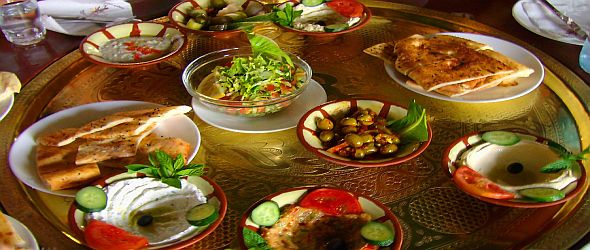We don’t mean to be pushy but we will say that you cannot come to North Cyprus and not partake of some traditional Turkish Cypriot meze! Meze is the mainstay of traditional cuisine in North Cyprus, and basically means appetisers or starters. More often than not, there is so much of it that depending on your own appetite, you may not require a main course!
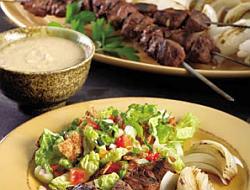 Meze are served in various forms and variations all over the Middle East and certainly the Turkish Cypriot variety have influences which may be recognisable if you have ever eaten meze in another country. However, there are also some which are definitely unique to this part of the world. You will also find that depending on the time of year, the offerings will differ slightly due to the seasonal produce on offer, which is nice as you will know that everything is fresh to the table.
Meze are served in various forms and variations all over the Middle East and certainly the Turkish Cypriot variety have influences which may be recognisable if you have ever eaten meze in another country. However, there are also some which are definitely unique to this part of the world. You will also find that depending on the time of year, the offerings will differ slightly due to the seasonal produce on offer, which is nice as you will know that everything is fresh to the table.
Served at the beginning of a meal they come in both hot and cold forms, usually served in batches of 4 or 5 to keep your taste buds fresh and enthused for the next batch (no problems there!). You’ll find a great mix of choices for meat and fish lovers with vegetarians especially well catered for with a lot of the dishes being vegetable based. You may find that you eventually end up with around 14 or 15 varieties so be warned!
Now that we have hopefully got your taste buds going and you are interested to know what kinds of meze there are, we will list some of the more popular and common mezes you might expect to be served:
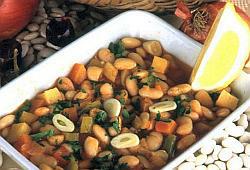 Cacık – (pro. Jajuk) – this is such a lovely, palate cleansing and refreshing dish in summer time. Combining fresh plain yoghurt made from sheep’s milk, finely chopped cucumber, mint and a dash of lemon. Often served along with main courses too it’s an excellent accompaniment for meat dishes too – yum!
Cacık – (pro. Jajuk) – this is such a lovely, palate cleansing and refreshing dish in summer time. Combining fresh plain yoghurt made from sheep’s milk, finely chopped cucumber, mint and a dash of lemon. Often served along with main courses too it’s an excellent accompaniment for meat dishes too – yum!
Calamar – just a different spelling for calamari! Usually served with lemon juice and some salt, you get the gist of this one!
Chakistes – these are very popular and are definitely a staple of a meze selection. Not too complicated to explain these are basically crushed green olives served dressed in olive oil, a little crushed garlic, coriander and lemon juice. More often than not you will also find these on the breakfast menu too.
Dolma/Sarma – These are stuffed varieties of meze which often feature vine leaves, peppers, courgette flowers or pumpkin flowers which are used as wraps and stuffed with a mix of rice, tomatoes, sultanas, meat, herbs and spices. Very flavoursome and more-ish! We love this variety as it is known as ‘Yalancı Dolma’ – meaning Stuffed Liar! This is apparently because during the Second World War no one could afford to stuff things with meat, thus being classed as cheating. Obviously the name has stuck!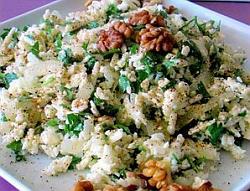
Fasülye – In short, beans! There are loads of different types of beans that are served, black eyed beans, green beans, butter beans with our favourite being long green beans cooked in stock with pieces of chicken and tomato. Great served hot or cold with yoghurt and bread. Simple but so tasty and very healthy too.
Hellim – (or Halloumi!) – a salted or unsalted sheep’s or goats cheese served sliced and grilled or fried as a meze. It has a unique taste and when grilled is crispy and chewy with some people finding it tastes a bit like bacon – each to their own!
Humus – great with bread just as a dip on its own and even better when served with a full meze! This dish is made from blended chickpeas and tahini paste with various spices to add to its flavour which is quite sharp but delicious.
Köfte – a general term for meatballs, as they can come in various forms, but the ingredients are usually the same with minced meat, onion and herbs all mixed together and either fried, baked or grilled. Bulgur köfte for example is bulgar wheat used as the outer coating for the meatball and deep fried to make a crisp coating – not the most healthy of meze 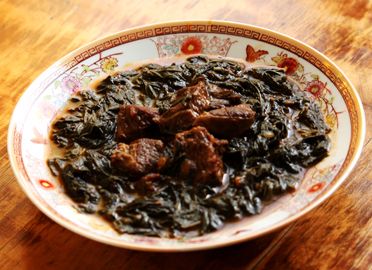 but absolutely scrummy!
but absolutely scrummy!
Molehiya – also served as a main course, you will often we have this as part of a meze meal. We have to say that it’s personal taste with this one, but plenty of people love it! Molehiya is a green leaf vegetable unique to Cyprus. The leaves are dried in the sun and then boiled, usually along with pieces of chicken to make a kind of stew. The leaves have quite a bitter taste when eaten but along with a few herbs and spices it makes for a very healthy dish.
Mucver – (pro. Mujver) – one of our personal favourites! This is a batter mix of courgette flowers, milk and eggs whipped together and small spoonfuls of it then dropped into a hot pan of oil and cooked until crispy on the outside. Absolute heaven on a plate!
This is just a selection for you to get the general idea of how delicious a Turkish Cypriot meze meal can be. There are so many more to add such as cracked almonds on ice, salted fish, fresh beetroot, ox tongue, brain (no thanks!), dried meats and other vegetable dishes, and you should try and sample as many as you can! There are plenty of traditional Turkish Cypriot restaurants to eat at every day of the week, so why not partake of a few!
Given the fact that for locals it is an important part of a social gathering such as family get-togethers, weddings, parties and other functions, the meze meal is the most popular way of eating for the majority of the population in North Cyprus. It is also sometimes the easiest way to eat given the heat in summer; you can eat as much or as a little as you like, take your time over it, and no one is expected to polish off the whole lot!
Oh and don’t forget the main course and dessert as well – we’ll save that for another time!

